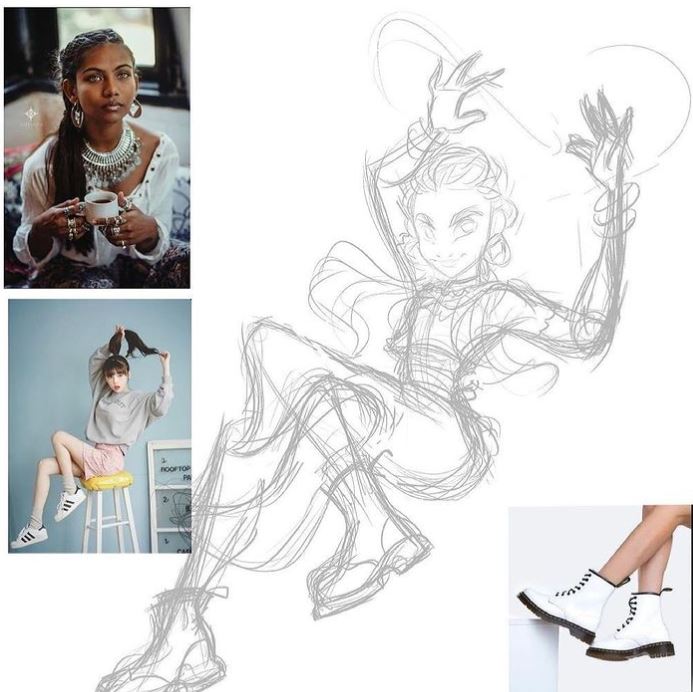
Often when we are producing art, it can feel as though we need to create everything completely from our minds to be true artists. This thought process, however, can be dangerous for our artistic progress in the long run. Considering all we know about how malleable our memory can be, why do we put so much pressure on ourselves to draw everything without a reference?
For example, we know that eyewitness reports are often the least reliable form of evidence. When creating art, referencing should be considered a foundational tool for all artists, one that allows you to ensure your work maintains believability even if it is highly stylized.
Check out how to study a figure from a photographic reference in Warren Louw’s chapter in our Illustrator’s Guidebook.
First, start by collecting as many references as possible! Having a wide range of images to draw inspiration from will ensure that your work follows a cohesive theme while not taking too much visual information from any one source. A great way to achieve this is by creating mood boards that encapsulate the way in which you want your work to feel. Maria Lia Malandrino provides awesome examples of how to use references in the ‘How to Draw a Cartoon Character’ course. Check it out if you are looking to improve your character art!

Once you have collected your references, it’s important to know how to use them. Never start learning how to draw something new by tracing it! Although it might look the most accurate, you won’t improve your artistic skills with this method. Think of learning to draw a specific subject like learning to ride a bike. It takes a lot of practice at first but once you know how to draw something, you will have that skill in your artistic arsenal for life. So rather than tracing consider trying some of the following ideas instead.

1# Try some one-minute gesture studies using either a live drawing model or simply images of people or animals found on the internet. This method of reference practice is very effective as it allows you to not only get an understanding of proportions but also character posing. These drawings do not have to be neat, they just have to capture the overall feel of a person or pose.

2# Another fun method to practice your referencing skills is through movie still studies in which you capture screenshots of visually pleasing scenes from your favorite film and recreate them in your own style! This can be a great way to improve your understanding of color and lighting, as well as help you better understand how to compose your works. A good example of this can be seen in the work of artist Marina TetraOrb, who has done a range of studies from the film Spider-Man Homecoming in her own unique artistic style.

3# Another consideration for referencing in your work is, textures. Often texture is something overlooked by artists. It is, however, a visual factor that can significantly improve the overall quality of an artwork. An easy way to do this is to draw little orbs of each texture you want to practice, as seen here in Reina H’s example.

Now that you know the importance of referencing, why not try out a few of these practice methods today?
Rhea is an Australian concept artist who is currently studying at Griffith University. She is passionate about spreading her love of art to others.